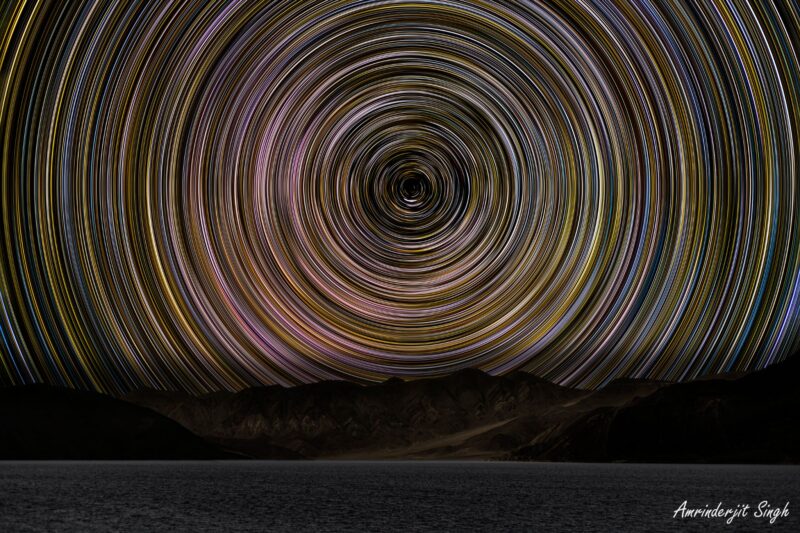
What are star trails?
Star trails show the motion of the stars over the sky during a period of minutes or hours. With a steady mount, long exposures and a few other tricks, you can take images of star trails, too. Often, the camera stays pointed at Polaris, the North Pole Star. In the Southern Hemisphere, photographs can point at the south celestial pole (not marked by a single star). Then, with an open shutter, the camera records an image as Earth turns on its axis and the stars move overhead. There are also many variations on star trail photos, as you’ll see here!
Star trails reflect Earth’s rotation, or spin, around its axis. The Earth makes a complete rotation relative to the backdrop stars in a period of about 23 hours and 56 minutes. So, as seen from Earth, all the stars go full circle and return to the same place in the sky after this period of time. This revolution with respect to the stars is what astronomers call a sidereal day.
Earth’s spin makes star trails
What this means is that, if you’re standing out under the stars, you see them move across the sky as the night progresses. The stars – like the sun during the daytime – move from east to west across the sky every night.
Stars near the celestial poles produce the smallest circles, while those near the celestial equator produce the largest. Each and every star moves 15 degrees westward in one hour.
Star trails are really arcs, or partial circles, whose ever-circling motions forever tabulate the passage of time.
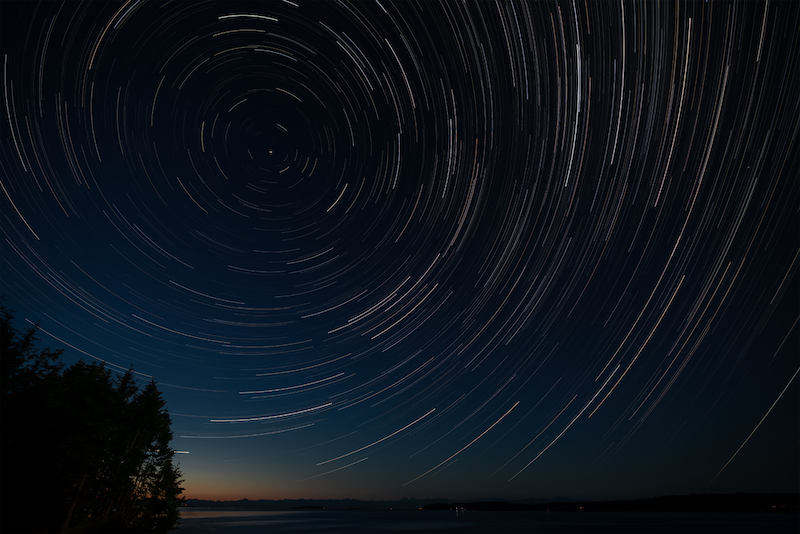
What you need to capture star trails
EarthSky Facebook friend Ken Christison has some wonderful photos of star trails. He said the equipment needed for making star trails is pretty simple:
First, a camera that allows manual settings so you can set your f/stop and shutter speeds, as well as ISO.
Next, a wide-angle lens, the wider the better.
A good steady tripod is a must.
Some cameras will have a built-in intervalometer, which can be set to shoot the desirable number of frames. In some cases the intervalometer has a bit of lag between shots. This is the reason I use a separate remote attached to the camera that holds the shutter down. And when the camera is set in continuous shooting mode, it will shoot 100 frames in succession with very little gap.
The remote I use is a simple one that can be found on eBay and uses a couple of AAA batteries that last quite a while. I just use the remote controller attached to the 10 pin connector. There is no need to use the wireless receiver in this case.
I use a shutter speed of 30 seconds, ISO of 400 to 800, and – with my 14-24mm lens at 14mm – shoot it wide open at f/2.8.
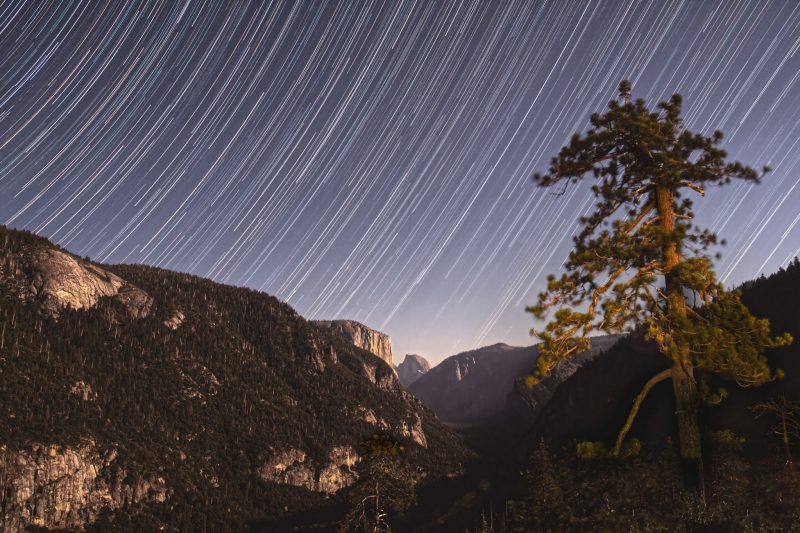
How to photograph the timelapse streaks
Next, Ken said, you’re ready to capture your star trail:
Make sure the camera is level. After focusing on a star, make sure the autofocus is turned off. Then, using the settings mentioned above, click the shutter and stay around long enough to know that the shutter is actually actuating. I normally go back in the house, set the timer on our kitchen stove for 45 minutes, and do other things while the camera does its work.
When the timer sounds, go back out and reset the remote by turning it off, waiting for the shutter to close, then reset quickly.
Finally, you’ll want to process your photo. Ken said:
This is one of the most important elements in making star trail images. The program I use is free, works well and is simple to use: Startrails.exe.
One other program that I have heard works well and is also free is StarStaX.
Thank you, Ken!
Visit Ken Christison’s Facebook page.
Read more: Long exposure star trail photography
Star trails from our community
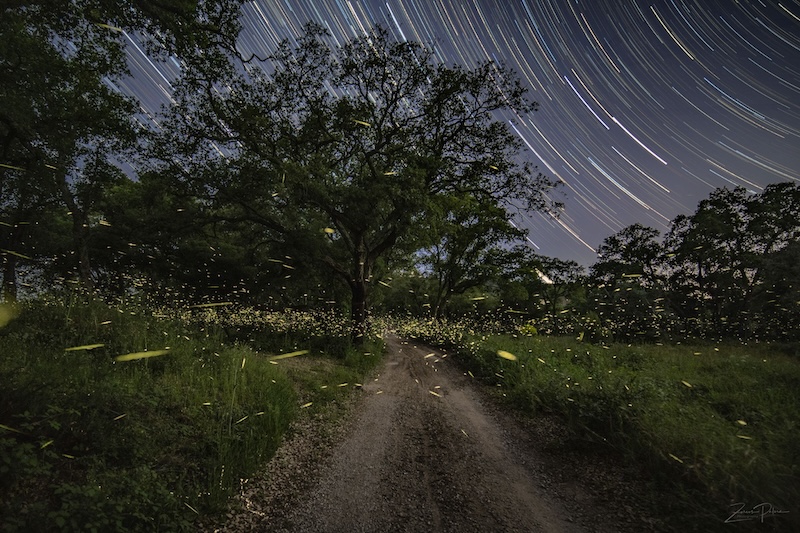
Together, they weave a story of harmony between the natural world and the cosmos, reminding us of the beauty and wonder that surrounds us every night.” Thank you, Jose!
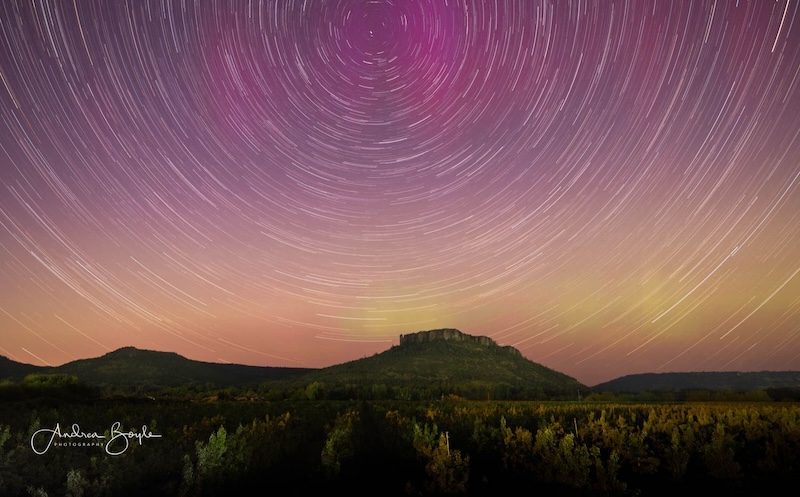
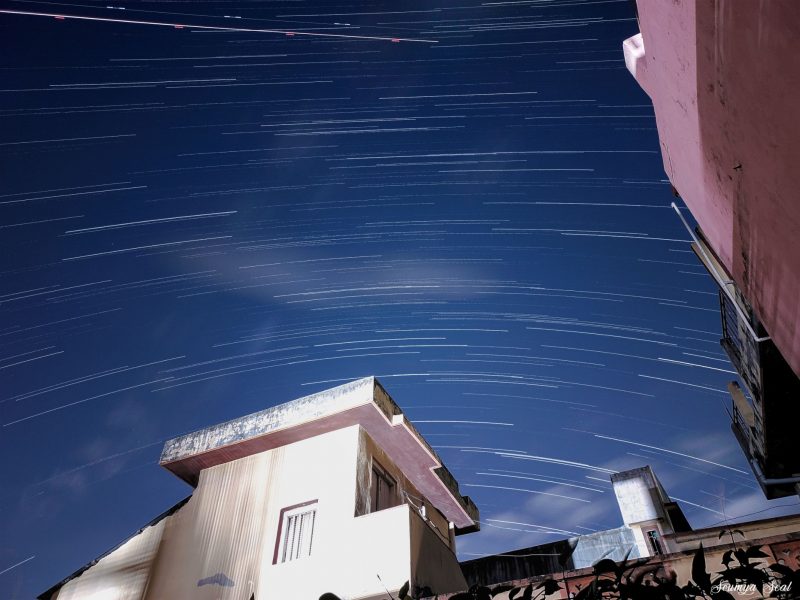
Moon and sun trails from our community
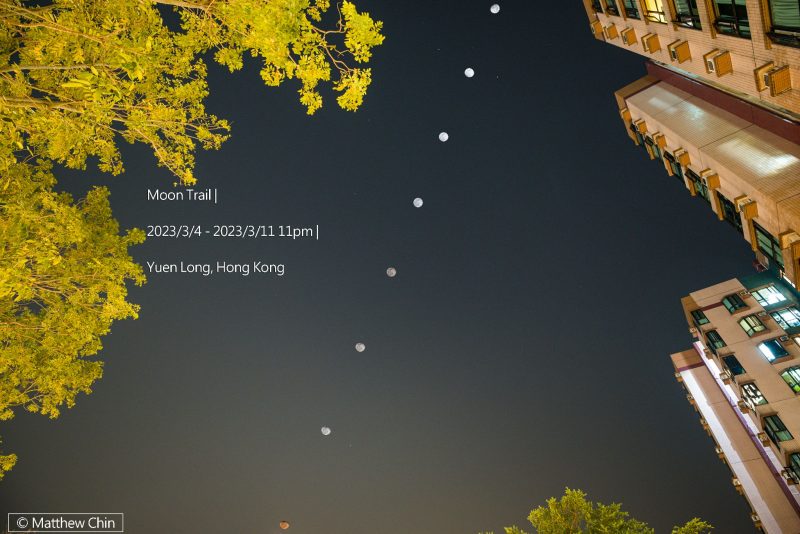
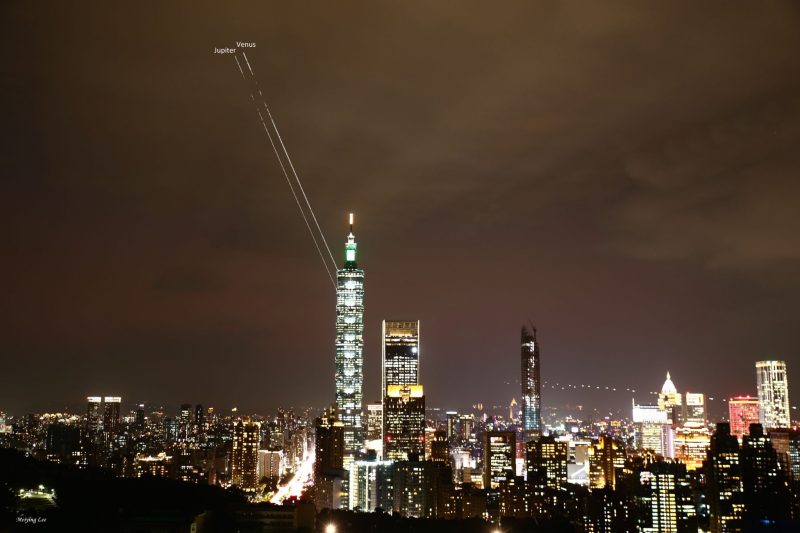
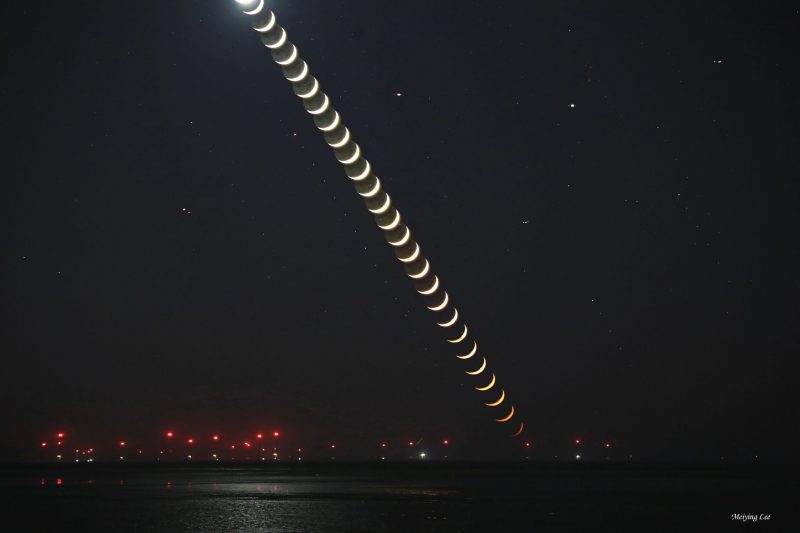
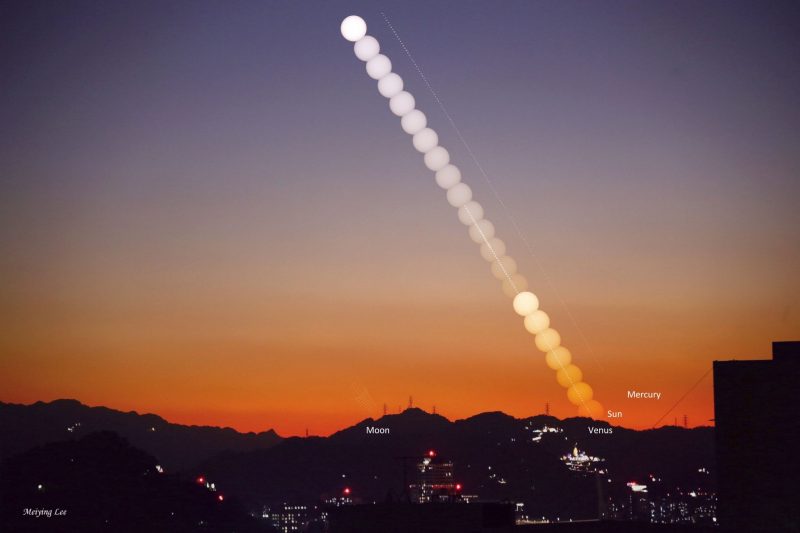
A star trails video
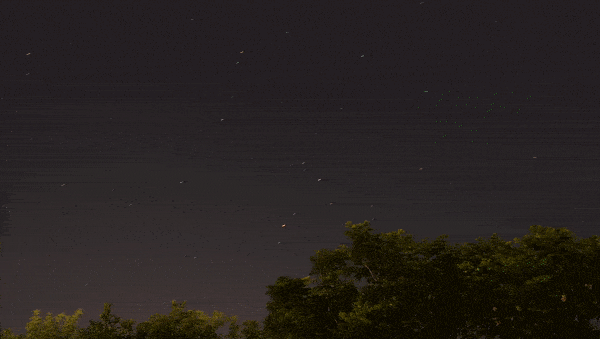
Bottom line: Star trails are photographs of the sky taken with long exposures. The result is an image with stars trailing across the sky in concentric streaks, often whirling around one of the celestial poles. But you can also take photos of sun trails, moon trails, or trails of the planets.
The post What are star trails, and how do I photograph them? first appeared on EarthSky.
from EarthSky https://ift.tt/FWamnUk

What are star trails?
Star trails show the motion of the stars over the sky during a period of minutes or hours. With a steady mount, long exposures and a few other tricks, you can take images of star trails, too. Often, the camera stays pointed at Polaris, the North Pole Star. In the Southern Hemisphere, photographs can point at the south celestial pole (not marked by a single star). Then, with an open shutter, the camera records an image as Earth turns on its axis and the stars move overhead. There are also many variations on star trail photos, as you’ll see here!
Star trails reflect Earth’s rotation, or spin, around its axis. The Earth makes a complete rotation relative to the backdrop stars in a period of about 23 hours and 56 minutes. So, as seen from Earth, all the stars go full circle and return to the same place in the sky after this period of time. This revolution with respect to the stars is what astronomers call a sidereal day.
Earth’s spin makes star trails
What this means is that, if you’re standing out under the stars, you see them move across the sky as the night progresses. The stars – like the sun during the daytime – move from east to west across the sky every night.
Stars near the celestial poles produce the smallest circles, while those near the celestial equator produce the largest. Each and every star moves 15 degrees westward in one hour.
Star trails are really arcs, or partial circles, whose ever-circling motions forever tabulate the passage of time.

What you need to capture star trails
EarthSky Facebook friend Ken Christison has some wonderful photos of star trails. He said the equipment needed for making star trails is pretty simple:
First, a camera that allows manual settings so you can set your f/stop and shutter speeds, as well as ISO.
Next, a wide-angle lens, the wider the better.
A good steady tripod is a must.
Some cameras will have a built-in intervalometer, which can be set to shoot the desirable number of frames. In some cases the intervalometer has a bit of lag between shots. This is the reason I use a separate remote attached to the camera that holds the shutter down. And when the camera is set in continuous shooting mode, it will shoot 100 frames in succession with very little gap.
The remote I use is a simple one that can be found on eBay and uses a couple of AAA batteries that last quite a while. I just use the remote controller attached to the 10 pin connector. There is no need to use the wireless receiver in this case.
I use a shutter speed of 30 seconds, ISO of 400 to 800, and – with my 14-24mm lens at 14mm – shoot it wide open at f/2.8.

How to photograph the timelapse streaks
Next, Ken said, you’re ready to capture your star trail:
Make sure the camera is level. After focusing on a star, make sure the autofocus is turned off. Then, using the settings mentioned above, click the shutter and stay around long enough to know that the shutter is actually actuating. I normally go back in the house, set the timer on our kitchen stove for 45 minutes, and do other things while the camera does its work.
When the timer sounds, go back out and reset the remote by turning it off, waiting for the shutter to close, then reset quickly.
Finally, you’ll want to process your photo. Ken said:
This is one of the most important elements in making star trail images. The program I use is free, works well and is simple to use: Startrails.exe.
One other program that I have heard works well and is also free is StarStaX.
Thank you, Ken!
Visit Ken Christison’s Facebook page.
Read more: Long exposure star trail photography
Star trails from our community

Together, they weave a story of harmony between the natural world and the cosmos, reminding us of the beauty and wonder that surrounds us every night.” Thank you, Jose!


Moon and sun trails from our community




A star trails video

Bottom line: Star trails are photographs of the sky taken with long exposures. The result is an image with stars trailing across the sky in concentric streaks, often whirling around one of the celestial poles. But you can also take photos of sun trails, moon trails, or trails of the planets.
The post What are star trails, and how do I photograph them? first appeared on EarthSky.
from EarthSky https://ift.tt/FWamnUk

Aucun commentaire:
Enregistrer un commentaire